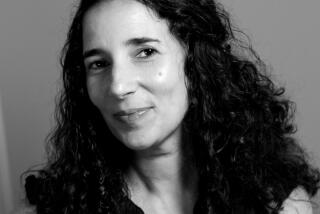Toronto takes eco seriously
Toronto is Canada’s largest city, a multicultural stew of 2.5 million people spread along the shore of Lake Ontario, and it takes its tree-hugging seriously. Trash cans have separate slots for paper and plastic. Street signs warn against letting cars idle for more than three minutes. A massive wind turbine mounted near the convention center generates enough electricity to power 250 homes, and frigid water drawn from the lake is used to cool downtown office buildings.
The city even has its own Green Tourism Association, a nonprofit group that maintains lists of activities, restaurants and attractions it regards as ecologically responsible. Shari Simpson-Campbell, the association’s director, said more and more visitors are demanding such amenities.
“When people think of ecotourism, they’re always thinking of going to Costa Rica or saving the rain forest, but you have to be a good environmentalist while visiting any city,” she said. “If you have sustainable practices at home, why would you leave that at home if you’re going somewhere else?”
The association’s Web site led me to the Gladstone Hotel, a one-time flophouse transformed into stylish lodgings. It has a lengthy “green policy” that calls for everything from composting to reusing towels to stocking its cafe with all things local, organic and fair-trade. The soap, shampoo and moisturizer in each room are made by a small Ontario company that cultivates its own herbs and collects beeswax from its own hives.
The Gladstone is in Toronto’s arty Queen West neighborhood, a collection of galleries, bars and restaurants, and the tattooed folk who haunt them. The vibe was more grunge than green -- the work of graffiti taggers, who presumably did not use soy-based paint, was everywhere -- but signs of environmental consciousness were plentiful. On Queen Street West, the area’s main drag, a storefront advertised the “Now House,” a project to turn drafty old homes into energy-efficient structures. The Propeller gallery hosted an exhibition of works inspired by climate change. And plenty of restaurants flaunted their vegetarian, seasonal or otherwise-righteous offerings.
The menu of Little Tibet Restaurant, posted on the front window, promised organic dishes. After I was seated, I learned that the organic fare was “a work in progress.” The rest of the table chose vegetable dumplings; I ordered lamb.
The next day, I caught a bus outside the hotel that took me to a subway station, and, a few stops later, I was standing alongside the Humber River, which winds through western Toronto on its way to Lake Ontario. Following the river, I figured, would give me a true nature lover’s view of the city.
Ted Cordina, a former dot-com consultant who now runs Toronto Kayak and Canoe Adventures, met me in a nearby parking lot with boats and a guide -- his 16-year-old son, Mathias. We shoved off, and within minutes, the noise of traffic was gone. A few housetops poked above the trees covering the riverbank, but soon they disappeared.
We poked around some marshes where tufts of reeds and cattails jutted 10 feet above the water. We spotted deer by the riverside chewing leaves and staring back with little evident concern. In the distance was a swirling black cloud of cormorants, from which a few of the birds peeled away to dive after fish. The current carried us lazily downstream, but as I neared the lake, I was yanked from my reveries by the sight of the CN tower, Toronto’s 1,815- foot concrete-and-steel trademark, looming to the east.
Later that day I made my way to Kensington Market, the city’s crunchiest neighborhood.
It’s the sort of place where you’ll find vendors selling hemp milk or wallets made from recycled juice boxes. An old sedan parked on Augusta Avenue had been gutted, slathered with a hippie-hued paint job and turned into a planter. A slogan on the back said, “The Revolution Will Not Be Motorized.”
The Rice Bar served no-holds-barred organic meals; I had lime- and ginger-infused rice mixed with black beans, pumpkin seeds and free-range, hormone- and antibiotic-free chicken.
That evening I had dinner at Fressen, a vegan restaurant on Queen Street West. From the marinated tomato, fennel and chickpea salad to the sweet potato Moroccan stew, the tapas-style dishes left me full and satisfied.
I spent my last morning in Toronto pedaling through downtown on a Sights on Bikes tour led by Tanya Roberts, an aspiring opera singer who used her ample powers of projection to narrate city history over the clamor of Saturday traffic. She escorted my group past the St. Lawrence Market, site of Toronto’s first City Hall and now home to dozens of specialty food vendors; St. James Cathedral, a stately Anglican church fitted with spectacular stained glass windows; and Fort York, where the invading American army decamped during the War of 1812.
It was a fun, carbon-neutral outing, though after waiting more than 15 minutes for a streetcar, I took a cab back to the hotel.
More to Read
Sign up for The Wild
We’ll help you find the best places to hike, bike and run, as well as the perfect silent spots for meditation and yoga.
You may occasionally receive promotional content from the Los Angeles Times.






